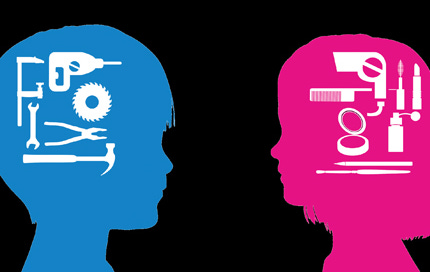Men and Women Are Really Different
Why self-reports understate male-female personality differences
How much do men and women differ in personality? There are two standard results.
First, women are more emotional and less logical. Jungian tests (such as Myers-Briggs) call this Feeling versus Thinking (F or T). The Five Factor Model (FFM) calls this Agreeableness. The size of the gap:
On both Myers–Briggs thinking–feeling and FFM agreeableness, there are large male–female gaps in the expected directions. Women are about half a standard deviation more agreeable than men; on the binary Myers–Briggs measure, the thinking–feeling breakdown is about 30/70 for women versus 60/40 for men.
Second, women are more prone to negative emotions. Myers-Briggs avoids measuring depression, anxiety, anger, and such, but the FFM’s Neuroticism measure (sometimes reverse coded as “Stability”) captures negative emotionality well. Standard result: The average woman is about .4 SDs more Neurotic than the average man*.
Critics of personality tests often object that, “These are just based on self-reports.” They’re right. How, though, should we expect self-reports to mislead us?
The obvious answer is that - at least to some degree - respondents rate their personality relative to the average person of their gender. When a man says, “I’m a logical guy,” he often means “I’m logical for a male,” not “I’m logical for a human.” When a woman says, “I’m so anxious,” she often means, “I’m anxious for a female,” not “I’m anxious for a human.”
Key point: If everyone rates their personality relative to the average person of their own gender, then researchers will automatically find no gender gaps no matter how large they really are! The immediate implication is that if researchers detect no gaps, we should still acknowledge that substantial gaps could still exist.
The less-obvious implication, however, is that whatever gaps we detect are probably understated. Suppose half of respondents compare themselves to the average human, and the other half compare themselves to the average same-sex human. Then the true male-female personality gap will be double the measured gap. If only 10% of respondents compare themselves to the average human, the true male-female personality gap will be ten times the measured gap.
As far as I know, no personality psychologist has checked for this masking effect. (If you know of any research I’ve overlooked, please share in the comments and I’ll boost it). Conceptually, however, repairing existing research would be easy to do so. Before subjects take a personality test, just randomly assign them to either the “Compared to people of both genders…” or “Compared to people of my gender…” treatment - and calculate the ratio.
Skeptics notwithstanding, personality tests are reasonably predictive for a lot of important life outcomes, including mortality and divorce. It’s likely the very best predictor of occupational choice. Properly measured, however, men and women’s personalities are even more different than the data say. Which means that personality is probably quite a bit more predictive than researchers having been telling us.
* Note that the same paper gives an unusually low estimate (.17 SDs) of the gender gap in Agreeableness. I don’t know if this is because of the international sample, or what.
Subscribe to Bet On It
Caplan and Candor





I am surprised that men are not more subject to anger, personally. One of the reasons I find the "Agreeableness" wording matching my own experience better than "more emotional/less logical" is that I think it is more that men are prone to different emotions, not less emotion overall. But I could be wrong.
Somebody has done this exact study! The result is that gender differences become much larger when you specify humans as the reference class: https://www.researchgate.net/publication/259096041_At_the_interface_of_social_cognition_and_psychometrics_Manipulating_the_sex_of_the_reference_class_modulates_sex_differences_in_personality_traits